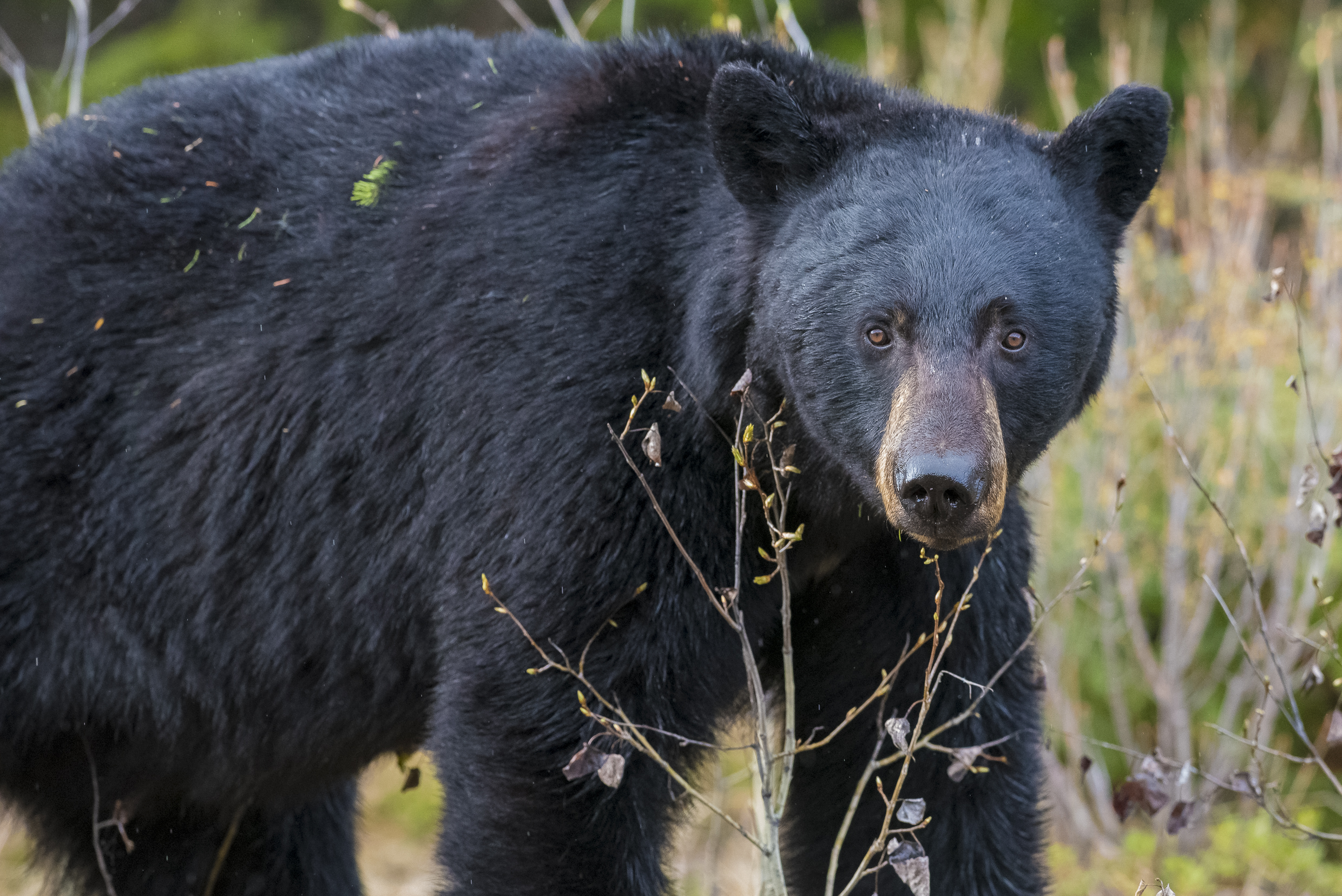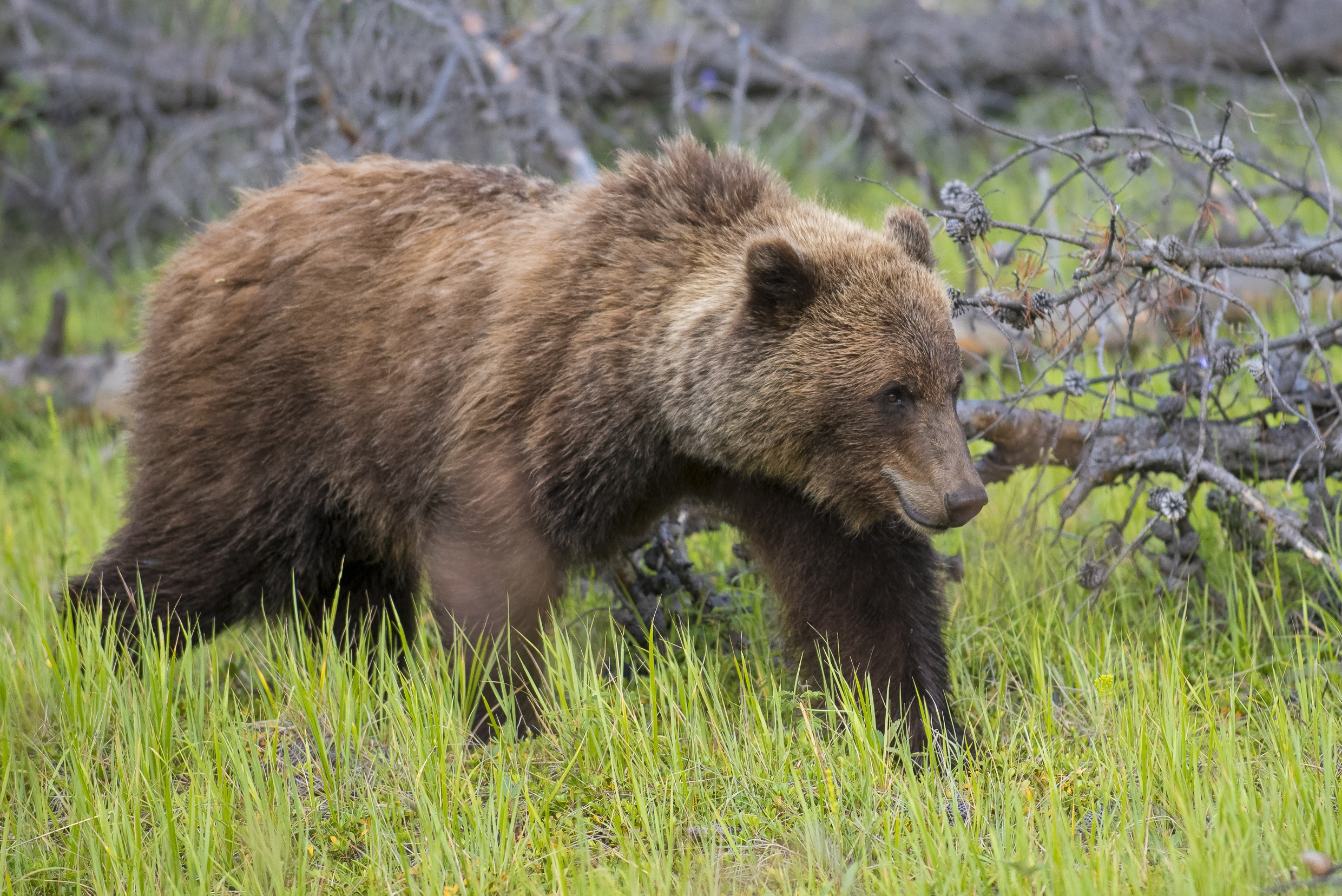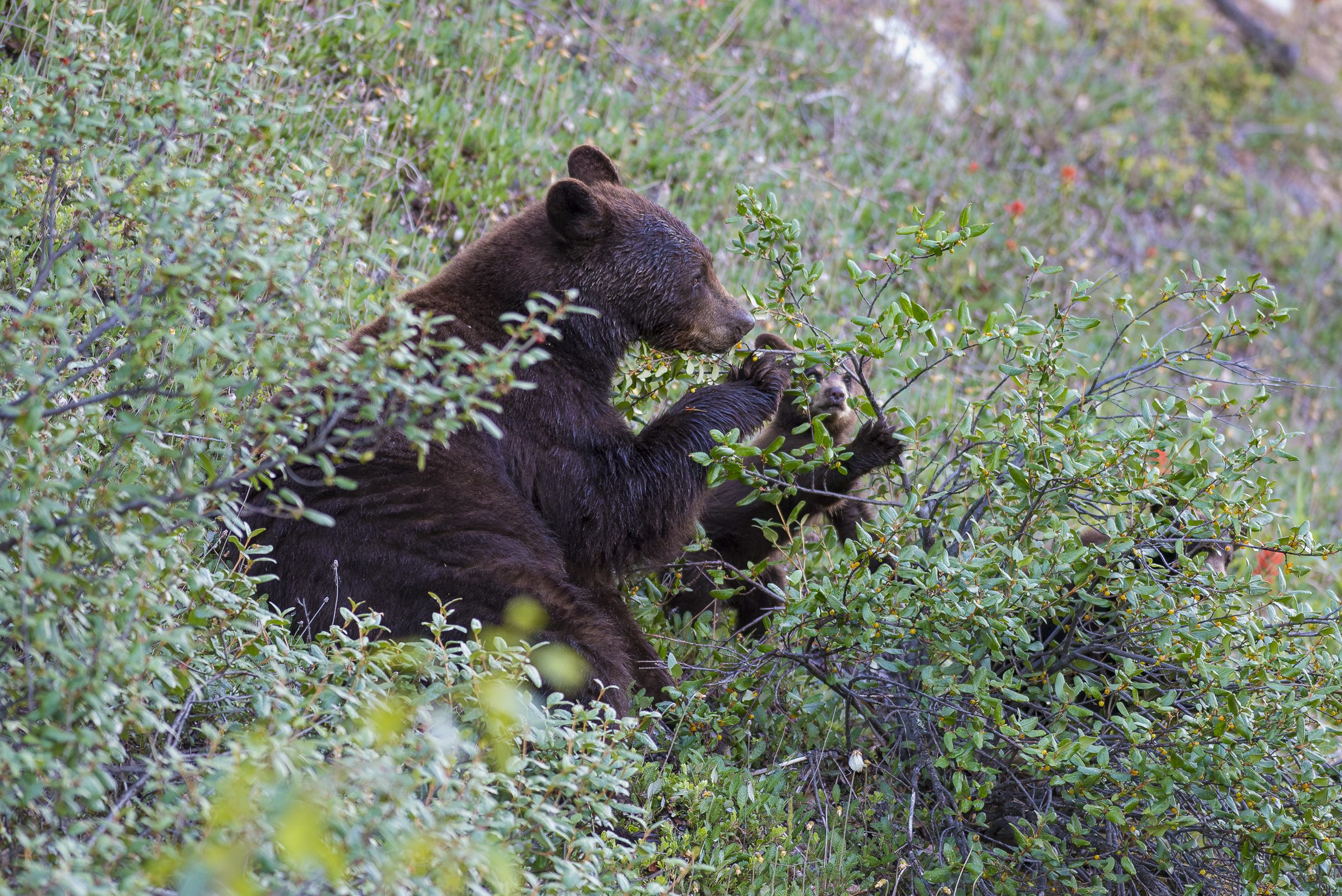In July, Todd Loewen, the Minister for Alberta’s Forestry and Parks, quietly updated provincial regulations to allow the use of dogs while hunting black bears.
His rationale? To help protect endangered woodland caribou populations, because black bears prey on newborn caribou calves.
Hunter gatherer
It might surprise Jasper Local readers that as a biologist, wildlife photographer and convervationist, I have nothing against an ethically-conducted hunt. I believe there is a sound, moral argument for humanely killing an animal to put food on the table. When you consider the life of a wild animal to the average industrially-raised chicken, or to a cow that has spent most of its life in a feed lot, it seems to me that if someone can take down a wild animal in good sport, and within the limits of the law, that’s fair game.
But hunting bears with dogs is neither ethically-sound, good sport, nor fair game. And since Lowen’s new rules will facilitate trophy hunts, for the most part, they’re not intended to put food on the table.
The longest reach
I hope we can all agree that if it’s used as a wildlife management technique at the government level, hunting should be well thought out—you know, backed with science? Well to this scientist (and a growing number of others), Loewen using caribou conservation as justification for allowing hunters to track down black bears by elite dog teams, does not pass the smell test. Like…at all.
Sure, black bears kill caribou calves, but this phenomenon only takes place until the calves are about a week old—after that, the calves can outrun a bear. In the boreal forest and in eastern Canada, black bear predation of calves can be substantial, but in the western mountains, elevation helps keep caribou and black bears from running into each other (caribou stay up high, black bears tend to hang out down low).
In the flatlands of Alberta, black bear and caribou habitat does overlap, but there’s another issue: the wet bogs where the flatland caribou spend much of their time are problematic for dogs – the water masks the scent, making tracking futile.
In other words, creating policy to eliminate bears with expensive hound hunts isn’t going to make a lick of a difference for boosting caribou numbers.

Stress test
Putting the effectiveness of the policy aside for a moment, there’s also the question of fair chase. The general strategy when hunting bears with dogs goes like this: the houndsman walks his dogs on leashes in bear country, searching for a scent trail. When they pick up a trail, the dogs will start ‘baying’ (howling), at which point the hunter unleashes the dogs. Depending on how fresh the trail is, it may take the dogs a couple of hours to catch up to the bear and either tree it, or surround it. The hunter then shows up to shoot it.
But because these are trophy hunts, the bear may not actually meet its maker at this point; it may be too small (poor trophy), or it may be a mother with cubs (illegal). All that energy the bear expended during the chase—energy surely better used surviving the coming winter—was for nothing. And what happens when the hunting party mistakes the scent of a threatened grizzly for a black bear?

It’s hard to imagine a more stressful experience for these bears, and how fair is it that few of them will escape either death or life-shortening stress once the dogs have found the scent?
The sound of silence
I’d love to know what scientific advice Minister Loewen received regarding the merits of his plan. I’ve asked, of course. The answer is as usual: crickets. We’ll probably never know what Alberta government scientists think about this move, because he forbids them from talking to the press. His communications offices trots out the same song and dance they did when justifying eliminating trapping limits for wolverine, allowing hunters to kill problem grizzly bears, and increasing hunting quotas for female cougars. Minister Loewen swings a wrecking ball through provincial wildlife regulations, and tells the public he simply knows best.
But why? It’s evident that bear hunting with dogs won’t actually help caribou. It’s obvious it will cause only death for some bears and low body fat for others. Who is actually asking for it? Because the only people who would benefit are people that have the dogs, the time and the motive: an elite number of well-appointed hunters and professional outfitters.

Follow the money
Bear hunts are big bucks. A quick Google search shows that a guided, six-day spring bear hunt costs about $5,500, while spring or fall ‘spot and stalk’ bear hunts run about $5,200. I couldn’t find a price for dog-assisted bear hunts anywhere in Alberta (perhaps because it’s so new), but I think it’s fair to say that they will be even more expensive. Cougar hunts (already dog-assisted) can cost thousands of dollars per day.
Clearly, the only beneficiaries of this policy are the small group of people that run outfitting businesses in Alberta—a group that until recently, included Minister Loewen himself! Sure, he has divested himself of ownership in Red Willow Outfitters (in favour of his wife and son), but in my view, the Honourable Minister’s family and guide-outfitter connections are influencing his judgement.

For the guise
Some will argue that houndhunting is arduous, takes months of preparation and training, and because every hunt doesn’t end in a kill, is much more sporting than wildlife advocates and conservationists paint it.
Hunting bears with dogs might not be shooting fish in a barrel, but using the guise of caribou conservation just so your buddies can hang a rug in their man cave is patronizing at best.
At worst, it’s bad policy and unaccountable governance.
Mark Bradley // info@thejasperlocal.com


